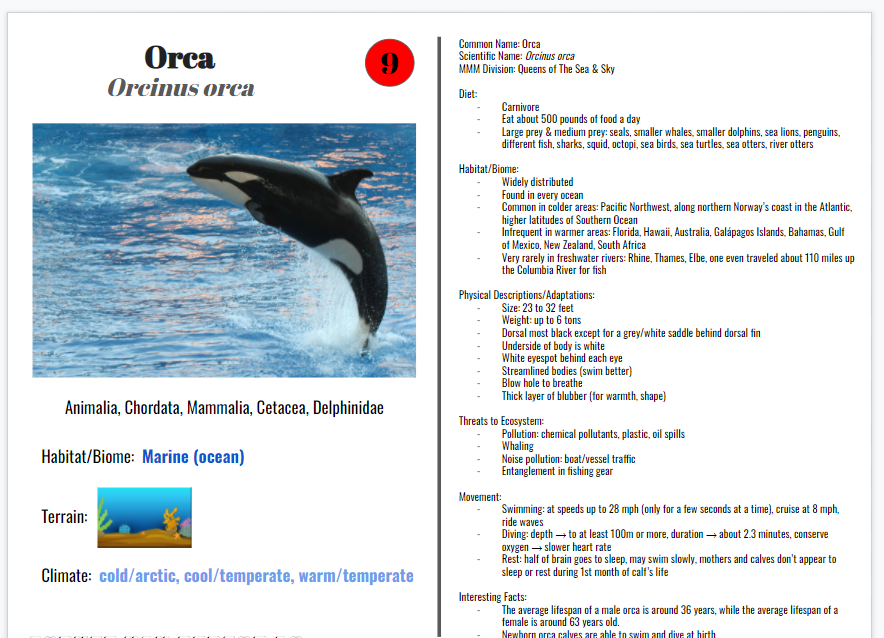by Patrick McShea
At one suburban Pittsburgh school, the tournament bracket sheets currently generating discussions have nothing to do with basketball. Since 2013, science teacher Christian Shane has strengthened science engagement among the seventh and eighth students he teaches at North Allegheny District’s Ingomar Middle School through participation in a group learning project designed by scientists and educators that borrows its organizational structure, timing, and alliterative name from the annual NCAA Division 1 Men’s Basketball Tournament.
March Mammal Madness is clearly a take on the far better known, March Madness, the branding name for the weeks-long college tournament whose single game elimination schedule, when plotted as a chart in advance of the start date, invites fans to use their background knowledge to predict, frequently as a bet or wager, the outcome of every game.
Participants in March Mammal Madness are also asked to make far-seeing predictions, but on theoretical battle encounters involving mainly mammals rather that basketball games. The online event began in 2013 as the idea of Dr. Katie Hinde, a researcher and Associate Professor at Arizona State University. Since its early days, tournament organizers have made great efforts to raise bracket-filling decisions beyond the realm of guess work through the creation of an extensive and easy to use website that is part of the Arizona State University Library system.
Once the creatures selected for the annual competition are announced in late February, participants of all ages and academic backgrounds can visit the site to locate a range of accurate and up-to-date information about each species. At Ingomar Middle School, Christian’s students used the site as an aid in creating a series of Animal Research Trading Cards for all 65 of this year’s combatants. In seventh grade classes, online research of some combatants, including black bear, grizzly bear, coyote, mountain lion, and beaver, was bolstered by firsthand examination of mammal skulls borrowed from the CMNH Educator Loan Collection.

In summarizing his own recently completed bracket, Christian provides an example of an epic pinnacle encounter. “I went with the Alaska theme in picking Grizzly vs Orca, with Orca for the win! #TeamOrca.” Lest a battle example featuring two top-of-the-food-web predators gives a distorted view of the sound and fury of theoretical matches, this information from the “Frequently Asked Questions” section of the tournament website reminds participants that some matches wouldn’t make for good television:
The battles are NOT always “nature, red in tooth and claw.” Sometimes the winner “wins” by displacing the other at a feeding location, sometimes a powerful animal doesn’t attack because it is not motivated to.
Evidence that this year’s bracket has created middle school-level excitement among the scientists and educators at Carnegie Museum of Natural History arrived in a recent email reminder Curator of Mammals John Wible sent to colleagues participating in this year’s event:
Now in case you were befuddled by some of the common names used in the brackets (e.g., therapsid or pangolin) I have attached a listing of all the taxonomic names for the combatants. So for example, there are 8 species of pangolins and which one is the pangolin here . . . Smutsia gigantea, the giant pangolin from Africa.
In the first two rounds, I remind you that the location of the battle is in the home habitat of the higher seeded (with the lower number!) combatant. From round 3 on, there is one of four random environments for the battles announced before the battle.
Providing greater public insight into how scientists think about the world we all share is in fact one of the broader impacts of March Mammal Madness. Last year, in a research paper documenting the event’s development, reach, and benefits, the creative team responsible for March Mammal Madness offered this insight:
Scientists situate ourselves in the domain of data collection framed by hypotheses and predictions as we speculate about the world(s) around us. But fundamentally these are just grown-up words for ideas hewn from imagination and the creative combination of what is known to journey into the unknown. March Mammal Madness is collective, “performance science” – the stories of animals, told creatively with awe for the natural world. We celebrate species and the ecosystems they inhabit, the scientists who conduct studies, and the funders who make the research possible. (https://elifesciences.org/articles/65066#s7)
As the March Mammal Madness tournament progresses, you’ll be able to follow some commentary from CMNH scientists and educators on Twitter @CarnegieMNH.
Teachers who would like to follow the overall tournament may also want to use #2022MMMk12 with their students for a more student-friendly twitter feed.
Patrick McShea works in the Education and Visitor Experience department of Carnegie Museum of Natural History. Museum employees are encouraged to blog about their unique experiences and knowledge gained from working at the museum.
Related Content
Carnegie Museum of Natural History Blog Citation Information
Blog author: McShea, PatrickPublication date: March 10, 2022
